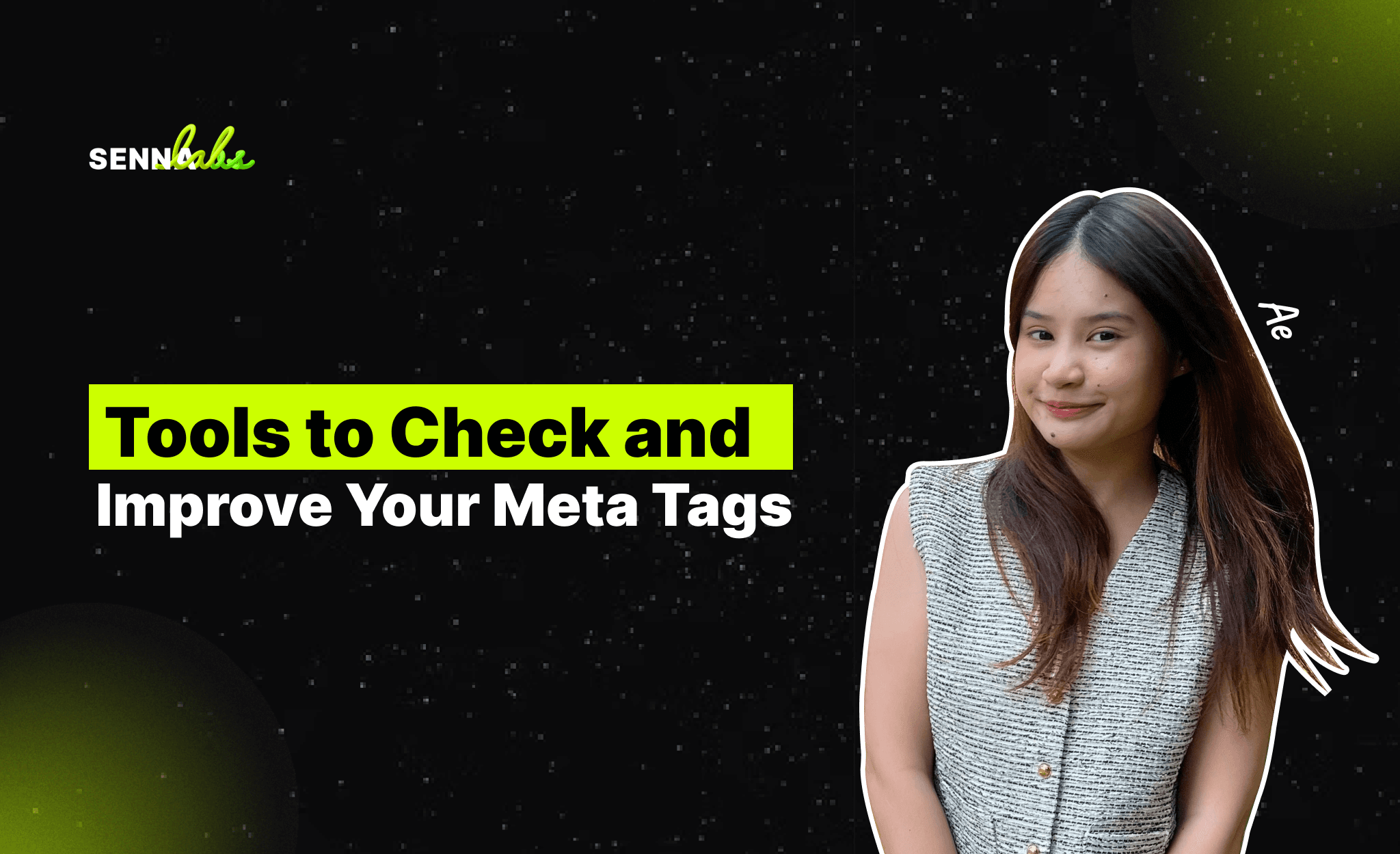Tools to Check and Improve Your Meta Tags
Share

Your website may have great content, fast performance, and solid backlinks—but if your meta tags are missing, duplicated, or poorly written, your visibility in search results could suffer.
Meta titles and meta descriptions are often the first things users see in Google’s search listings. They influence not just how your pages are indexed, but whether users feel compelled to click. Yet many websites overlook these simple yet powerful elements.
The good news? You don’t need to be an SEO expert to manage your meta tags. Several tools—many of them free—can help you audit, analyze, and improve your meta tags for better rankings and higher click-through rates (CTR).
In this article, we’ll cover some of the most effective tools for checking and optimizing your meta tags and show how an insurance company used one of them to improve their search visibility significantly.

Why Meta Tags Matter
Before we jump into the tools, let’s recap why meta tags are so important:
-
Meta Title: This appears as the clickable headline in search results. It’s a strong SEO signal and impacts both rankings and CTR.
-
Meta Description: This appears below the title. While not a ranking factor, it affects whether users click on your result.
Well-optimized meta tags can:
-
Improve your rankings (especially when titles include target keywords)
-
Increase clicks by presenting a compelling reason to visit your site
-
Help Google understand the purpose of your page
Real Use Case: Insurance Site Fixes Meta Tag Issues with Screaming Frog
A mid-sized insurance company had launched dozens of service pages over several years. But traffic was plateauing—even though the content and offerings were up to date.
The problem:
Their meta tags were inconsistent. Many pages were missing meta descriptions or had duplicate titles inherited from older templates.
What they did:
They used Screaming Frog SEO Spider to crawl their entire site and identify pages with:
-
Missing meta descriptions
-
Titles longer than 60 characters
-
Duplicate meta tags
They then rewrote and optimized the meta tags on their most important pages—especially product and comparison pages.
The result:
-
Search impressions increased
-
Pages that previously ranked low moved up by 1–2 positions
-
Click-through rates improved, leading to more inquiries and quote requests
Best Tools to Check and Improve Meta Tags
1. Google Search Console (Free)
This is Google’s official tool for monitoring your website’s performance in search.
What it’s good for:
-
Checking how Google sees your site
-
Viewing CTR, impressions, and rankings for each page
-
Identifying pages with low performance (that may need better meta tags)
How to use it:
-
Go to the “Performance” report
-
Filter by “Pages” or “Queries”
-
Look for high-impression but low-CTR pages—these are prime candidates for meta tag improvement
2. Screaming Frog SEO Spider (Free & Paid)
Screaming Frog is a desktop program that crawls your website like a search engine and provides an SEO audit.
What it’s good for:
-
Finding missing, duplicate, or overly long meta titles and descriptions
-
Exporting all your meta data into a spreadsheet for bulk analysis
-
Auditing large sites efficiently
Use case: Perfect for agencies or businesses managing 50+ pages
3. Yoast SEO (WordPress Plugin)
Yoast is one of the most popular SEO plugins for WordPress, used by millions of websites.
What it’s good for:
-
Editing meta titles and descriptions on each page or post
-
Previewing how your content will appear in search results
-
Getting readability and keyword optimization tips
Why it’s great for beginners:
It provides a color-coded system to show where your meta tags are too short, too long, or missing important keywords.
4. SEMrush / Ahrefs (Paid Tools with Free Features)
These comprehensive SEO platforms include meta tag auditing as part of their broader site health checks.
What they’re good for:
-
Auditing technical SEO, including meta tags
-
Showing historical performance before and after changes
-
Comparing your meta tags against competitors
Bonus: They often suggest keyword improvements based on your industry or niche.
5. SERPsim or Mangools SERP Simulator (Free Tools)
These online tools let you preview how your meta title and description will appear in Google search results.
What they’re good for:
-
Testing your meta tags in real time
-
Checking character limits visually
-
Avoiding awkward truncation in search snippets
What to Look for in a Meta Tag Audit
When reviewing your meta tags with these tools, focus on:
-
Length: Keep titles under 60 characters and descriptions under 155–160
-
Keyword placement: Include relevant keywords naturally
-
Uniqueness: Avoid using the same title or description across multiple pages
-
Clarity: Make it clear what the page offers
-
Engagement: Use action-oriented language to encourage clicks
Quick Fix Tips Based on Your Audit
-
Missing titles → Add descriptive, keyword-relevant titles
-
Duplicate descriptions → Customize each one to reflect the page content
-
Titles too long → Trim unnecessary words while keeping core keywords
-
Low CTR pages → Rewrite with a clearer CTA or more engaging language
Best Practices for Meta Tag Optimization
-
Write for humans first, then search engines.
-
Use keywords early in the title and naturally in the description.
-
Avoid repetition—especially between title and description.
-
Make every tag unique to the content on that page.
-
Use tools regularly—set a schedule to audit your site every few months.
Final Thoughts
Meta tags are small but mighty. They influence how search engines see your pages and how users decide whether to visit them. With the right tools, auditing and improving your meta tags becomes a simple, repeatable process that can lead to:
-
Higher visibility
-
Better engagement
-
More traffic
Whether you're running a blog, eCommerce store, or service-based business, investing a few hours into your meta tags can deliver long-term benefits.

Share

Keep me postedto follow product news, latest in technology, solutions, and updates
Related articles
Explore all


